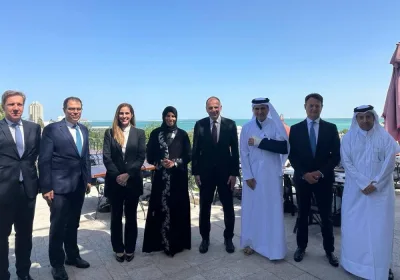"Looking forward, inflation is set to pursue an upward trajectory, due to higher expected construction activity, continued population growth, and given that Qatar has allowed starting May 1, 2016 its domestic gasoline and diesel prices to fluctuate on a monthly basis in response to changes in global markets," Bank Audi said in a report.
That being said, future gasoline and diesel prices would be based on a formula that takes regional prices, global levels, and production and distribution costs within Qatar into account.
Qatar’s consumer price index grew 3.1% on average during the first quarter of 2016, after rising 1.7% on average in 2015, mainly due to higher utility bills, phased since the summer, and a 30% fuel price increase introduced mid-January 2016, it said.
The country's monetary conditions were marked during the first quarter of the year 2016 by an uptick in inflation on the back of subsidy cuts, a contraction in broader money supply (M2) amidst reduced liquidity in the banking system, and stability in key policy rates despite the US monetary policy tightening.
Highlighting that exchange rate is being maintained at a rate of QR3.64 to $1; it said the authorities seem committed to maintaining the current exchange rate regime, arguing not only that Qatar’s gas and oil exports are denominated in the US currency but also that the peg offers stability and reassurance to investors.
Despite the peg, the Qatar Central Bank (QCB) didn’t respond in December 2015 to the US Federal Reserve’s decision to raise its target range for the federal funds rate by 25 basis points for the first time in almost a decade, stating that it did not cut rates to the same level as the US Fed after the 2008 global financial crisis.
Accordingly, key policy rates in Qatar remained stable, with overnight lending rate standing at 4.50%, the repo rate at 4.50%, and the overnight deposit rate at 0.75%.
On the other hand, QCB’s net international reserves reached $36.3bn at end-February, slightly down from $36.8bn at end-December 2015. This followed a tangible fall of 13.8% in 2015, the equivalent of $5.9bn, mainly driven by a 14.2% drop in foreign securities (equivalent to $4.1bn) and a 14.6% decrease in balances with foreign banks ($1.9bn).
The QCB net international reserves covered around 35.5% of money supply in local currency at end-February 2016 against 36.2% at end-2015 and to a much higher ratio of 44.6% at end-2014.
The broader money supply (M2) contracted 2.9% during the first quarter of 2016 to reach $139bn at end-March 2016 within the context of tightening banking sector liquidity due to lower oil prices. This followed a 3.4% expansion in M2 in 2015. The $4.8bn variation in money supply in 2015 compares to a money creation of $11.9bn, resulting mostly from a surge in claims on private sector of $16.9bn, an increase of $16.3bn in net claims on the public sector and a fall of $21.2bn in net foreign assets.
The difference between the expansion in money supply on the one hand and money creation on the other hand, suggests a demonetisation of monetary claims by $7.2bn in 2015, according to Bank Audi.

Highlighting that exchange rate is being maintained at a rate of QR3.64 to $1; it said the authorities seem committed to maintaining the current exchange rate regime, arguing not only that Qatar’s gas and oil exports are denominated in the US currency but also that the peg offers stability and reassurance to investors
Qatar's inflation is set to harden owing to several factors, including fluctuation in the domestic gasoline and diesel prices, yet the country is committed to maintain fixed parity with the dollar as the present exchange rate regime offers stability and reassurance to investors, Bank of Audi has said.


